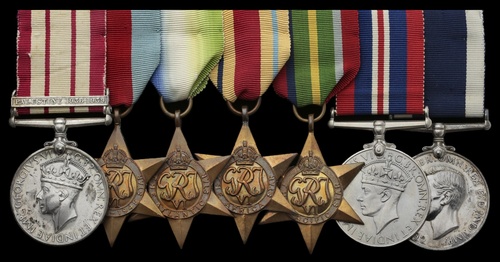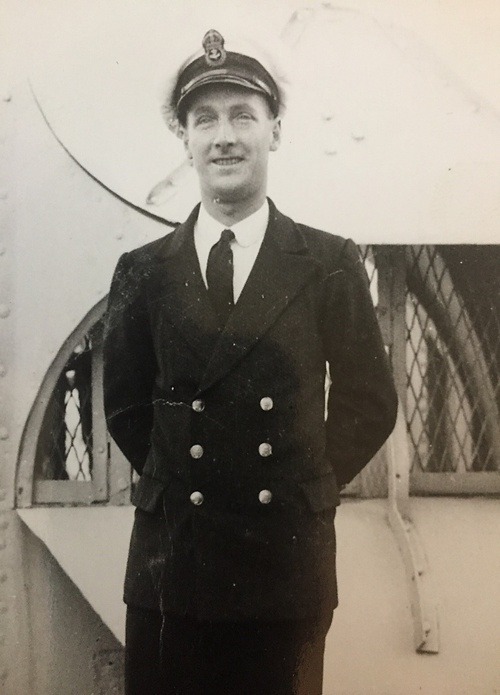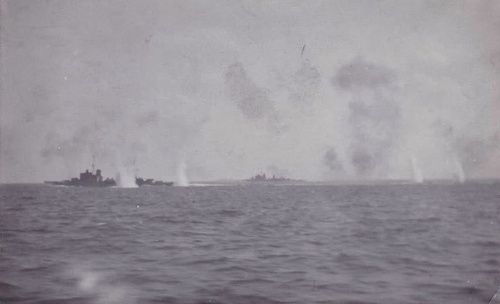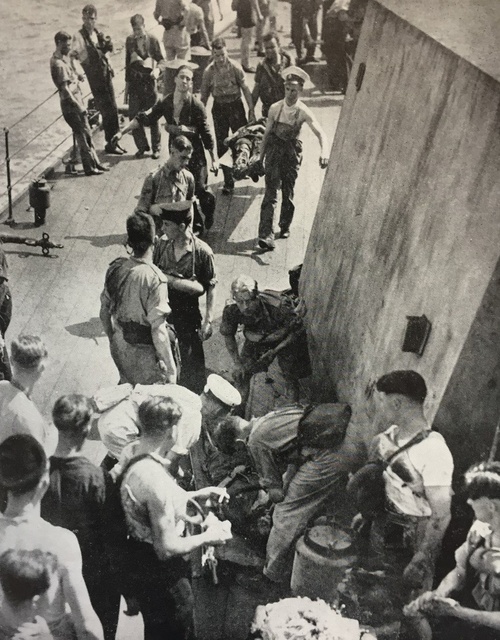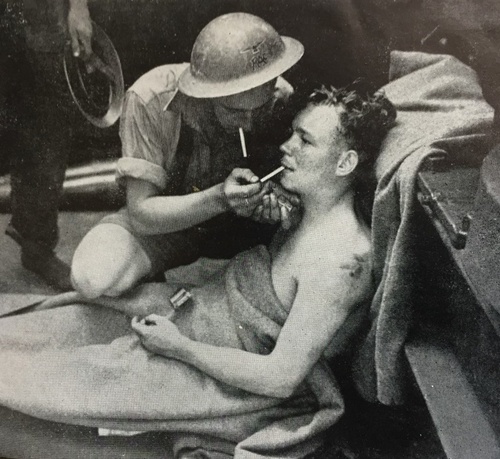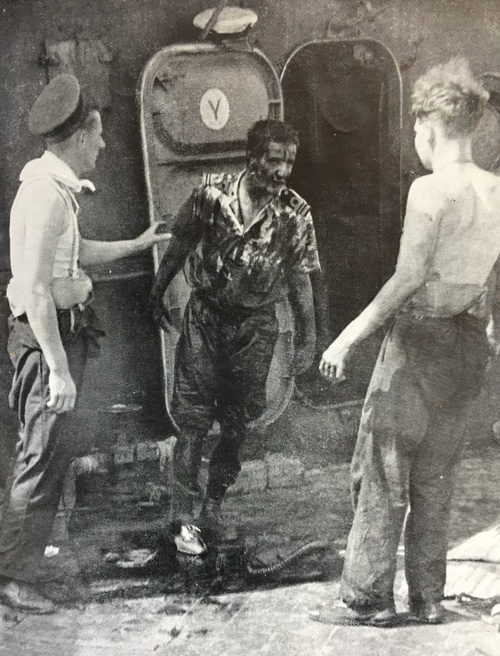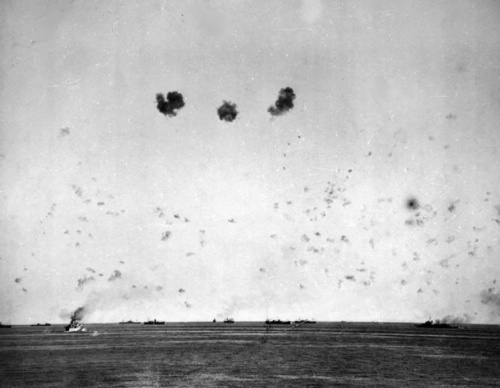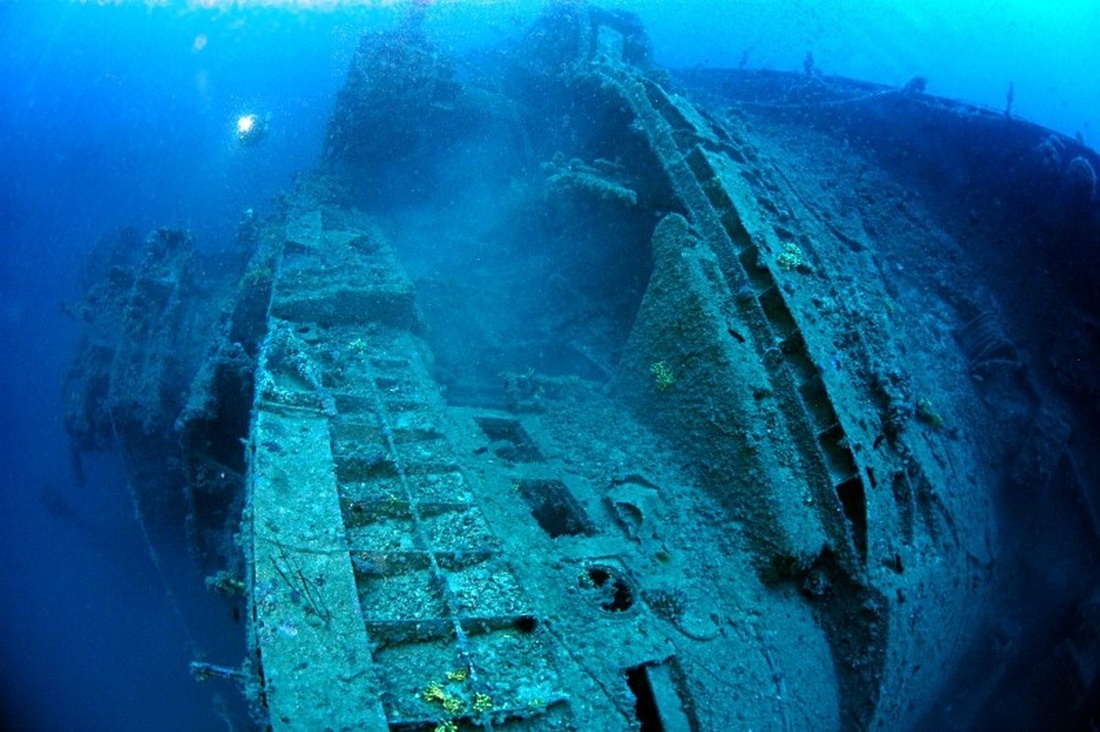Auction: 22003 - Orders, Decorations and Medals
Lot: 410
A pre-war Palestine and Second World War campaign group of seven awarded to Chief Engineer Artificer S. J. Woolgar, Royal Navy, who survived the loss of the cruiser H.M.S. Manchester during Operation "Pedestal"
Manchester's captain's decision to scuttle his heavily damaged ship became the subject of a contentious Court Martial but he must have taken comfort from the words of one of his ratings: 'The Captain decided that his choices were to wait until dawn and get blown to buggery, or to save the men'
No stranger to the sharp end of enemy fire, Woolgar had earlier witnessed Manchester being straddled by 15-inch shells at the battle of Cape Spartivento in November 1940 and survive an Italian aerial torpedo strike during Operation "Substance" in July 1941 - a strike that killed 26 of his shipmates
In 2002, the story of the cruiser's gallant ship's company was the subject of an ITV documentary - 'Running the Gauntlet: Sink the Manchester!' - and in 2009 Manchester's wreck was surveyed by a diving expedition
Naval General Service 1915-62, 1 clasp, Palestine 1936-39 (MX. 45205 S. J. Woolgar, E.A.2, R.N.); 1939-45 Star; Atlantic Star; Africa Star; Pacific Star; War Medal 1939-45; Royal Navy L.S. & G.C., G.VI.R., 1st issue (MX. 45205 S. J. Woolgar, E.A.1., H.M.S. Manchester), together with the recipient's identity disc, good very fine (8)
Sidney James Woolgar was born in Brighton, Sussex on 15 August 1904 and entered the Royal Navy as an Acting Engineer Artificer 4th Class in January 1926.
Having enjoyed steady advancement in the interim - and seen active service off Palestine - he was serving as an Engineer Artificer 1st Class in the cruiser H.M.S. Manchester in the East Indies on the outbreak of war in September 1939. Quickly recalled to the Home Fleet, Manchester served on the northern patrol out of Scapa Flow and captured the German merchantman Wahehe on 21 February 1940. It was however for her subsequent part in the ill-fated Norwegian campaign in April-May 1940 that she won her first Battle Honour.
Cape Spartivento - plenty of shell splinters
Manchester was next ordered to the Mediterranean, where she joined Somerville's Force 'F' on the Malta convoy run. On 27 November 1940, she was heavily engaged at the battle of Cape Spartivento - winning her second Battle Honour - and sustaining notable shell-splinter damage from the 15-inch gunfire of the Italian battleship Vittorio Veneto. She returned to the U.K. for repairs and a refit.
About this time, Vice-Admiral Lancelot Holland joined Manchester as Flag Officer 18th Cruiser Squadron. His tenure of command lasted until January 1941and he was later lost in the Hood, an action in which Manchester played her part, patrolling the Iceland-Faroes passage in search of Bismarck. Woolgar, meanwhile, had been awarded his L.S. & G.C. Medal.
Operation "Substance" - heavy casualties
In the summer of 1941, Manchester returned to the Malta run and was selected as an escort to Operation "Substance". One of the most important convoys of the war, "Substance" was subjected to relentless enemy attack and - on 23 July - Manchester received the undivided attention of five Italian S-79 torpedo bombers of 283rd Squadriglia: one aerial torpedo found its mark, detonating in the ship's boiler room and killing 26 men. Members of crew well-known to Woolgar, by now a Chief Engineer Artificer.
Escorted by destroyers, Manchester limped back to Gibraltar on one propeller shaft.
Temporary repairs were made at Gibraltar and the ship then sailed for Philadelphia for further repair. Following completion of this work in February 1942, Manchester joined the Home Fleet back at Scapa Flow, from whence she was deployed to the Arctic run - including participation in the disastrous PQ-17 operation.
Operation "Pedestal" - final fling
In August 1942, Manchester returned to the Mediterranean and took part in Operation "Pedestal".
The importance of "Pedestal" needs little introduction here, Winston Churchill himself requesting regular updates as to the convoy's progress, but for the record's sake it is worth registering the bare facts: of the 14 merchantmen that set out, nine were sunk and three damaged, while the Senior Service's input of 59 escorts - the largest such force ever assembled in defence of a convoy - sustained losses of an aircraft carrier, a cruiser and a destroyer, as well as having another half a dozen ships damaged. That cruiser was Manchester.
In the early hours of 13 August, some four miles off Kellibia, Tunisia, Manchester was torpedoed and severely damaged. Struck amidships on the starboard side by two torpedoes fired by the Italian torpedo boats MAS 16 and MAS 22, she sustained flooding in the engine room, after boiler room and the 4-inch magazine. Completely disabled and with no power, she developed a 10-12-degree list.
About 160 members of the ship's company were taken off by the destroyer Pathfinder, whilst others were subsequently rescued from rafts by Eskimo and Somali. However, efforts to control the flooding and enable the ship to return to Gibraltar proved unsuccessful and scuttling charges were placed. After the remainder of the ship's company had abandoned ship the charges were detonated; a torpedo from Pathfinder is reported to have assisted in the sinking.
Manchester sank at 0400 hours local time on the 13 August 1942.
Those members of the ship's company not picked up by the destroyers - and Woolgar was among them - managed to get ashore in Tunisia, where they were interned in appalling conditions by the pro-German Vichy French authorities.
Court Martial
After lengthy statements had been submitted from all witnesses and Admiralty experts, Manchester's commanding officer, Captain Harold Drew, was court-martialled on a charge of negligence. He claimed that he was unaware that Manchester retained mobility, after the torpedo hit, and that he understood that her armament was also largely incapacitated. The court proceedings determined that Manchester's damage was remarkably similar to that suffered on 23 July 1941; that Manchester was capable of steaming at 10-12 knots on her port outer propeller shaft, that her main and secondary armament was largely intact, and that the initial list of 10-11 degrees had been considerably reduced via counter-flooding and transfers of fuel oil.
Drew was found guilty, reprimanded and prohibited from further command at sea. It remains a contentious decision for Manchester had been crippled and Drew feared the ship, including her secret radar gear, might fall into enemy hands. The surviving crew members strongly supported both Captain Drew's assessment of the ship's situation and his decision to scuttle her, with one rating stating:
'The Captain decided that his choices were to wait until dawn and get blown to buggery, or to save the men.'
Subsequent career
Woolgar was released from captivity in the wake of Operation "Torch" in November 1942 and returned home to an appointment at Portsmouth.
His final sojourn at sea was in H.M.S. Assistance in October 1944 to July 1946, and it was in this capacity that he qualified for his Pacific Star. He finally came ashore in April 1948; sold with two copied portrait photographs.
Subject to 20% VAT on Buyer’s Premium. For more information please view Terms and Conditions for Buyers.
Sold for
£380
Starting price
£220

